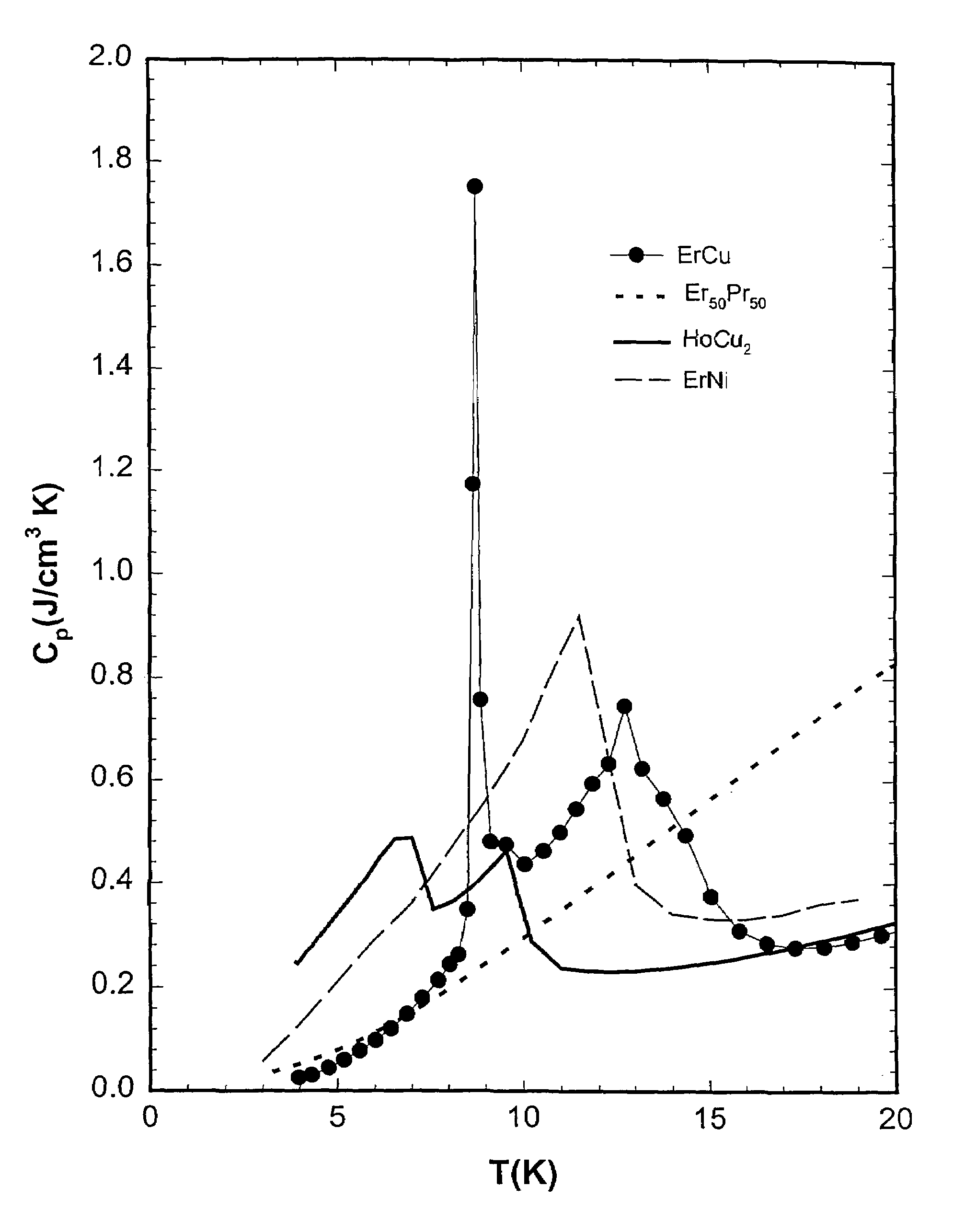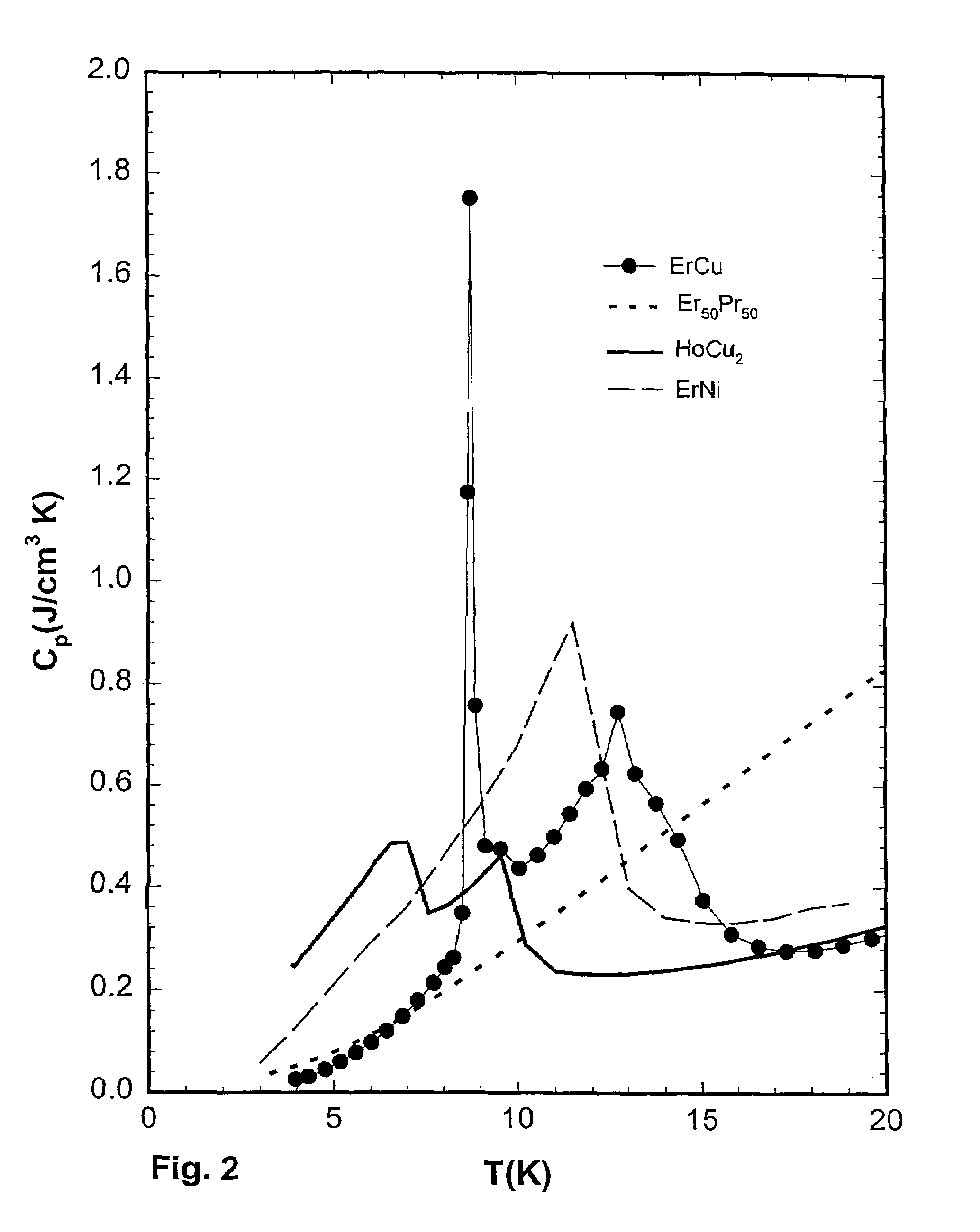Low temperature cryocooler regenerator of ductile intermetallic compounds
a technology of ductile intermetallic compounds and regenerators, which is applied in the direction of refrigeration machines, indirect heat exchangers, lighting and heating apparatus, etc., can solve the problems of not developing practicable lanthanide regenerator materials, and none of the authors were aware of the ductile nature of b2, cscl-type compounds, etc., to improve the cooling power and efficiency of the cryocooler
- Summary
- Abstract
- Description
- Claims
- Application Information
AI Technical Summary
Benefits of technology
Problems solved by technology
Method used
Image
Examples
example 1
[0086]With FIG. 39a in mind, to reach 4K or lower, regenerator section A would consist of one of the materials listed in Table 1, regenerator section B would be a material given in Table 2, while one of the compounds given in Table 4 would be utilized in regenerator section C.
example 2
[0087]For a cryocooler to reach a temperature in the 4 to 9 K range using the layering sequence shown in FIG. 39a, regenerator section or layer A would be a material listed in Table 2, regenerator section or layer B a compound from Table 3, and regenerator section or layer C would be a compound presented in Table 4.
example 3
[0088]Another four layer sequence (FIG. 39a) which could be used to cool down to the 4 to 9 K region would consist of a material from Table 2 in section or layer A, a compound from Table 4 in section or layer B, and compound given Table 5 would be the C section or layer component.
PUM
| Property | Measurement | Unit |
|---|---|---|
| temperature | aaaaa | aaaaa |
| temperature | aaaaa | aaaaa |
| temperature | aaaaa | aaaaa |
Abstract
Description
Claims
Application Information
 Login to View More
Login to View More - R&D
- Intellectual Property
- Life Sciences
- Materials
- Tech Scout
- Unparalleled Data Quality
- Higher Quality Content
- 60% Fewer Hallucinations
Browse by: Latest US Patents, China's latest patents, Technical Efficacy Thesaurus, Application Domain, Technology Topic, Popular Technical Reports.
© 2025 PatSnap. All rights reserved.Legal|Privacy policy|Modern Slavery Act Transparency Statement|Sitemap|About US| Contact US: help@patsnap.com



